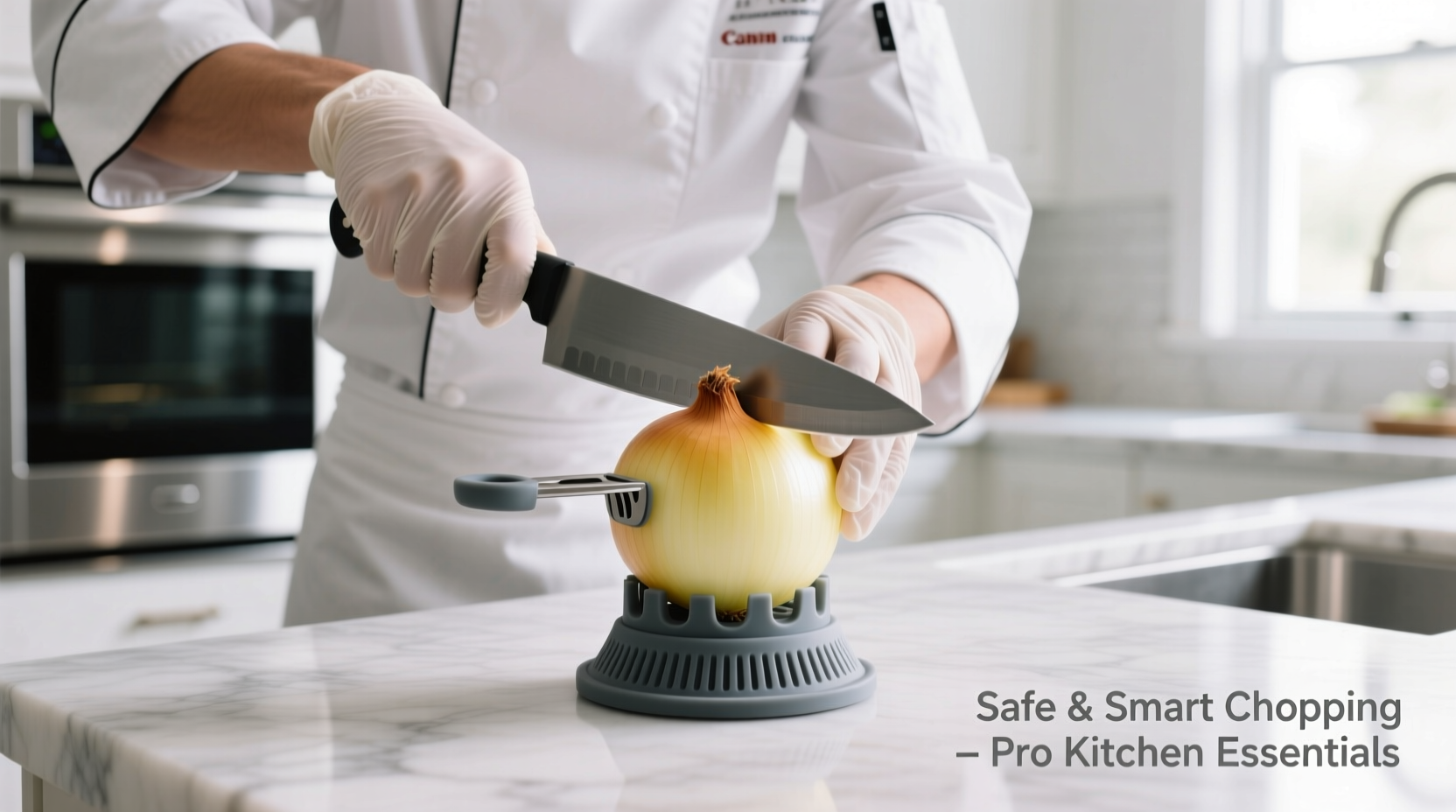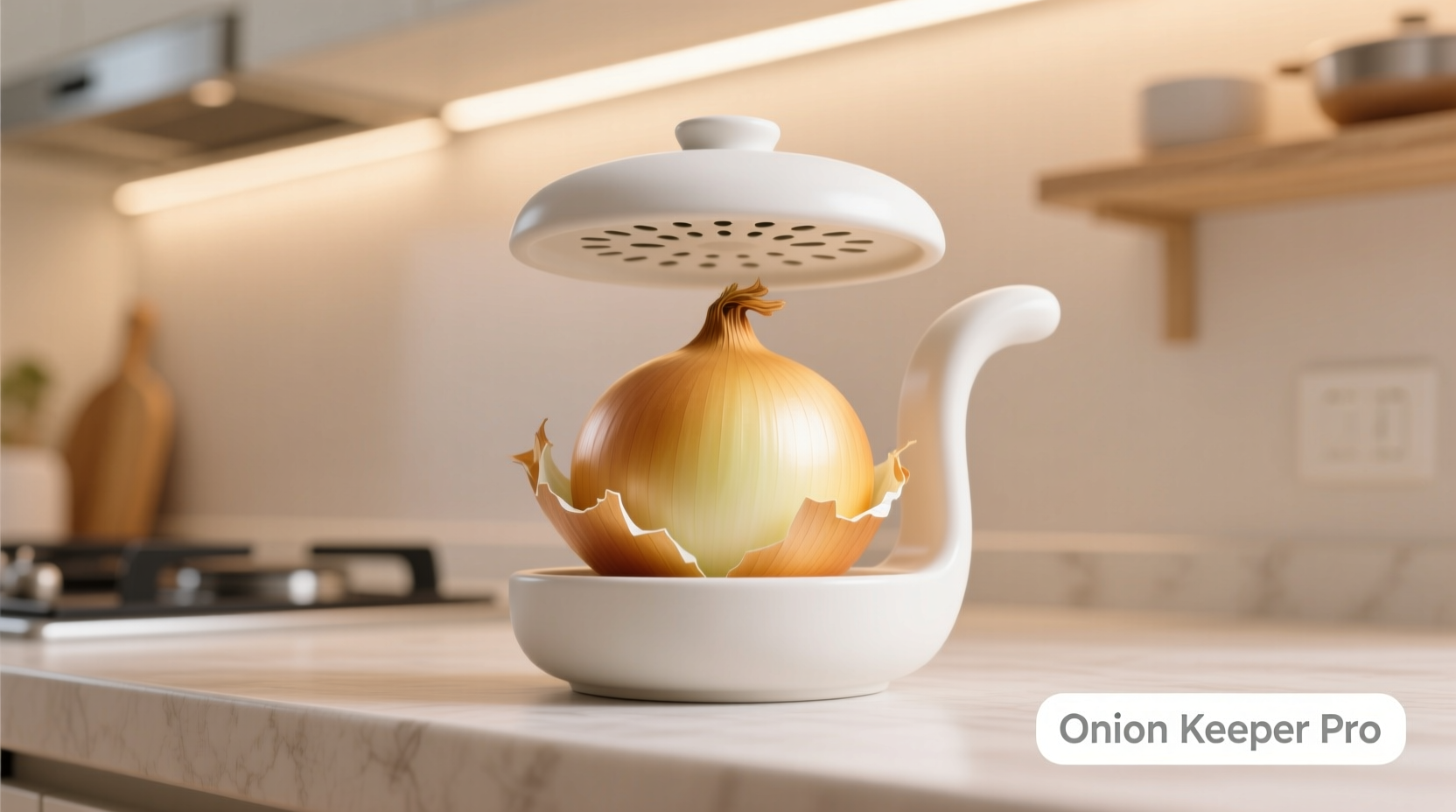Chopping onions remains one of the most universally frustrating kitchen tasks. That familiar sting in your eyes and the constant fear of slicing your fingers create unnecessary stress during meal preparation. Professional chefs and home cooks alike have sought solutions for generations, but modern onion holders provide the most practical, accessible answer to this age-old problem.
Why Onion Cutting Causes Tears and Injuries
When you cut an onion, you rupture its cells, releasing enzymes that convert sulfoxides into sulfenic acid. This unstable compound quickly transforms into syn-propanethial-S-oxide, a volatile gas that reacts with moisture in your eyes to form sulfuric acid—the source of that burning sensation. The American Chemical Society confirms this chemical reaction occurs within seconds of cutting, making traditional methods ineffective at preventing tears.
Simultaneously, the National Safety Council reports that kitchen knife injuries account for approximately 350,000 emergency room visits annually in the United States, with unstable food positioning being a primary contributing factor. When your non-dominant hand slips while holding an onion, the consequences can be severe.

How Onion Holders Solve Both Problems
Unlike temporary solutions like onion goggles or refrigeration, onion holders address the root causes of both problems simultaneously. These devices create a physical barrier between your eyes and the volatile compounds while providing secure anchoring that eliminates hand slippage.
"The engineering behind quality onion holders considers both ergonomics and food chemistry," explains Antonio Rodriguez, culinary expert with Michelin-starred kitchen experience. "The best designs position the onion at the optimal angle for cutting while directing the gas away from the user's face. This dual functionality makes them indispensable for serious home cooks."
Types of Onion Holders Compared
| Type | Best For | Tear Reduction | Safety Rating | Price Range |
|---|---|---|---|---|
| Clamp-style | Medium to large onions | ★★★★☆ | 9/10 | $15-$25 |
| Suction-base | Small kitchens | ★★★☆☆ | 8/10 | $10-$20 |
| Magnetic | Professional kitchens | ★★★★★ | 10/10 | $25-$40 |
| Foldable silicone | Travel and storage | ★★★☆☆ | 7/10 | $8-$15 |
Step-by-Step: Using an Onion Holder Properly
- Peel and trim the onion's root and stem ends
- Position the onion on the holder with the root end facing away from you
- Secure the onion using the device's clamping mechanism
- Adjust the angle to 30-45 degrees for optimal cutting position
- Begin slicing from the stem end toward the root
- Maintain consistent pressure on the knife while the holder keeps the onion stable
This technique creates uniform slices while keeping your dominant hand's fingers safely behind the knife's bolster. The angled position also allows volatile compounds to disperse away from your face rather than rising directly into your eyes.
Evolution of Onion Cutting Tools
Understanding the development of onion holders reveals why modern designs work so effectively:
- Pre-1950s: Cooks relied on manual techniques like wetting fingers or chewing bread
- 1960s: First commercial onion goggles introduced (limited effectiveness)
- 1980s: Basic plastic onion holders with suction bases appear
- 2000s: Ergonomic designs incorporating food science principles
- 2010s: Magnetic and clamp-style holders with adjustable angles
- Present: Multi-functional holders with integrated cutting guides
Maximizing Safety and Effectiveness
For optimal results, follow these evidence-based recommendations:
- Always position the onion with the root end intact until final cuts (the root contains higher concentrations of tear-inducing compounds)
- Use a sharp knife—dull blades crush more cells, releasing additional irritants
- Cut in a well-ventilated area or near a running fan to disperse gases
- Clean your holder after each use with warm soapy water to prevent residue buildup
- Store in a dry location to maintain suction or magnetic properties
Common Mistakes to Avoid
Even with an onion holder, these errors reduce effectiveness:
- Over-tightening clamps, which can damage the onion structure
- Incorrect positioning that directs gases toward your face
- Using worn-out holders with compromised grip surfaces
- Attempting to cut extremely small onion pieces that won't secure properly
- Ignoring proper knife maintenance while relying on the holder
When an Onion Holder Isn't Enough
For particularly sensitive individuals or large-scale onion preparation, consider these complementary approaches:
- Cut onions under running water (reduces gas formation but affects texture)
- Use a food processor with appropriate attachments
- Chill onions for 30 minutes before cutting (slows enzyme reaction)
- Work near a stove vent fan set to high
Remember that while these methods can help, they often compromise texture or convenience. The onion holder remains the most balanced solution for everyday cooking needs.











 浙公网安备
33010002000092号
浙公网安备
33010002000092号 浙B2-20120091-4
浙B2-20120091-4